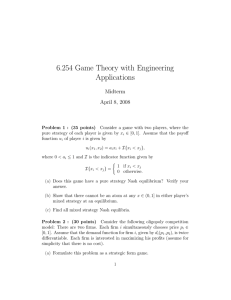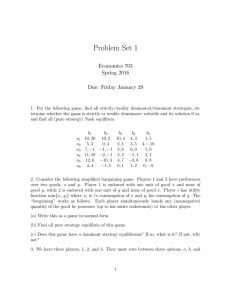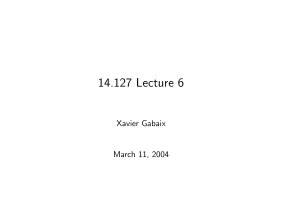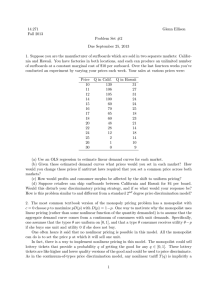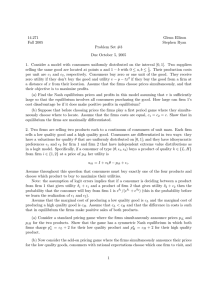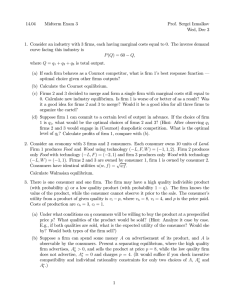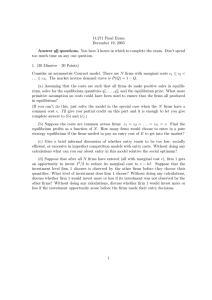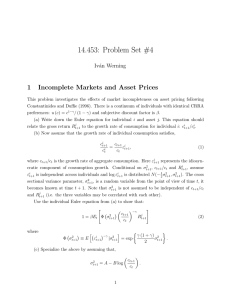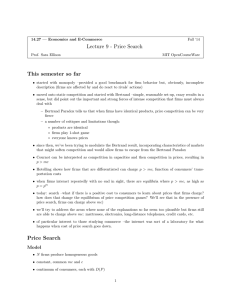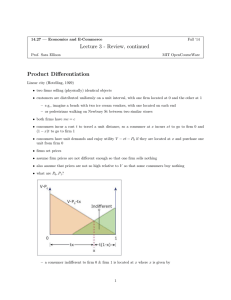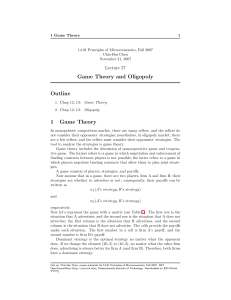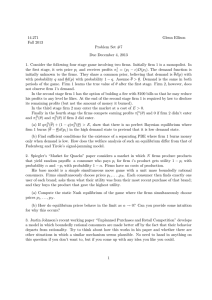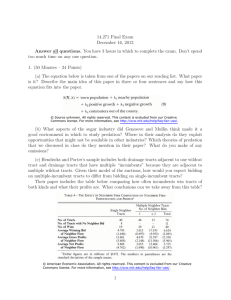Document 13383690
advertisement
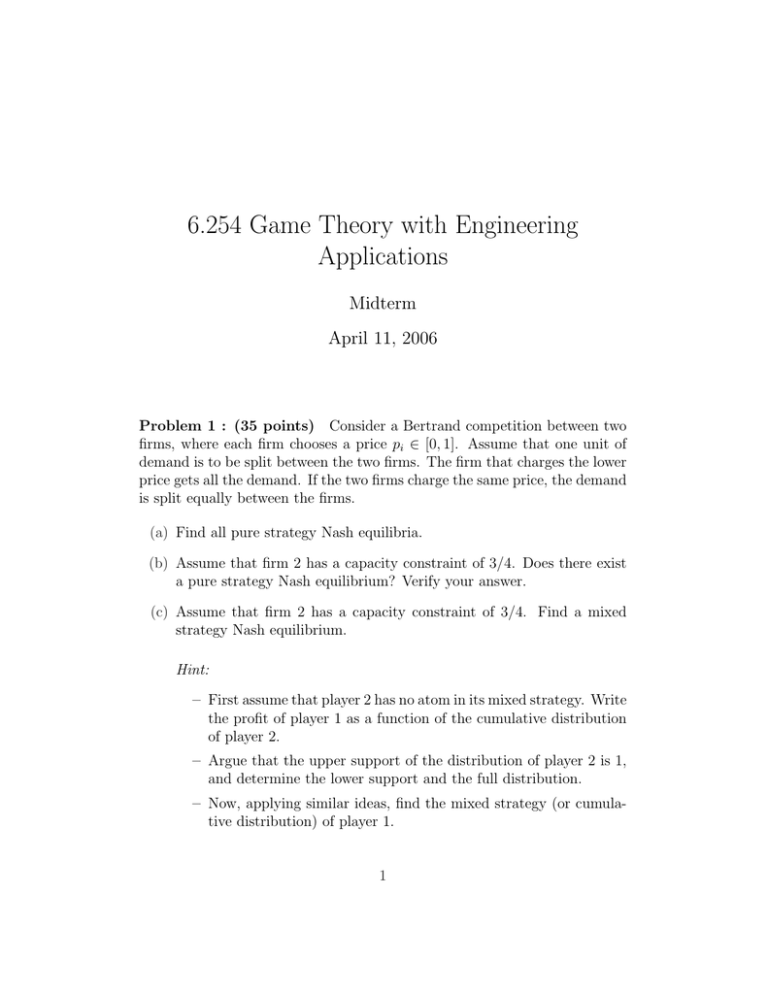
6.254 Game Theory with Engineering Applications Midterm April 11, 2006 Problem 1 : (35 points) Consider a Bertrand competition between two firms, where each firm chooses a price pi ∈ [0, 1]. Assume that one unit of demand is to be split between the two firms. The firm that charges the lower price gets all the demand. If the two firms charge the same price, the demand is split equally between the firms. (a) Find all pure strategy Nash equilibria. (b) Assume that firm 2 has a capacity constraint of 3/4. Does there exist a pure strategy Nash equilibrium? Verify your answer. (c) Assume that firm 2 has a capacity constraint of 3/4. Find a mixed strategy Nash equilibrium. Hint: – First assume that player 2 has no atom in its mixed strategy. Write the profit of player 1 as a function of the cumulative distribution of player 2. – Argue that the upper support of the distribution of player 2 is 1, and determine the lower support and the full distribution. – Now, applying similar ideas, find the mixed strategy (or cumula­ tive distribution) of player 1. 1 Problem 2 : (30 points) Consider a Cournot competition between two firms, where each firm chooses a quantity qi ∈ [0, 1/2]. Assume that the inverse demand function P : [0, ∞) �→ [0, ∞) is a twice continuously differ­ entiable function given by P (x) = � 1 � 1 − x1−α , 1−α for some scalar α < 1. Assume that firm i has a cost function Ci : [0, ∞) �→ [0, ∞), which is increasing and differentiable. Hence, the payoff function for firm i is ui (q1 , q2 ) = qi P (q1 + q2 ) − Ci (qi ). (a) Assume that α < 0 and Ci (qi ) = ci qi for some scalar ci > 0. Does this game have a pure strategy Nash equilibrium? (b) Assume now that 0 < α < 1 and for each i, Ci (qi ) is a general increasing and differentiable cost function. Does this game have a pure strategy Nash equilibrium? (c) Assume that 0 < α < 1 and for each i, Ci (qi ) is a general increasing and differentiable cost function. Describe a simple learning mechanism and show that it converges to a Nash equilibrium. Problem 3 : (35 points) Consider a two-player game with the following payoff structure: U M D A δ, δ 0, 1 1, 0 B 1, 0 δ, δ 0, 1 C 0, 1 1, 0 δ, δ where δ is a scalar. (a) Assume that δ = 1/2. Write a pair of linear optimization problems to find the Nash equilibrium strategies. Solve these problems to find all Nash equilibria of the game. Does fictitious play converge in the time-average sense? Verify your answer. (b) Assume now that δ = 0. Find all Nash equilibria of this game. Does fictitious play converge in the time-average sense? Verify your answer. Find also a correlated equilibrium of this game. 2 MIT OpenCourseWare http://ocw.mit.edu 6.254 Game Theory with Engineering Applications Spring 2010 For information about citing these materials or our Terms of Use, visit: http://ocw.mit.edu/terms.
